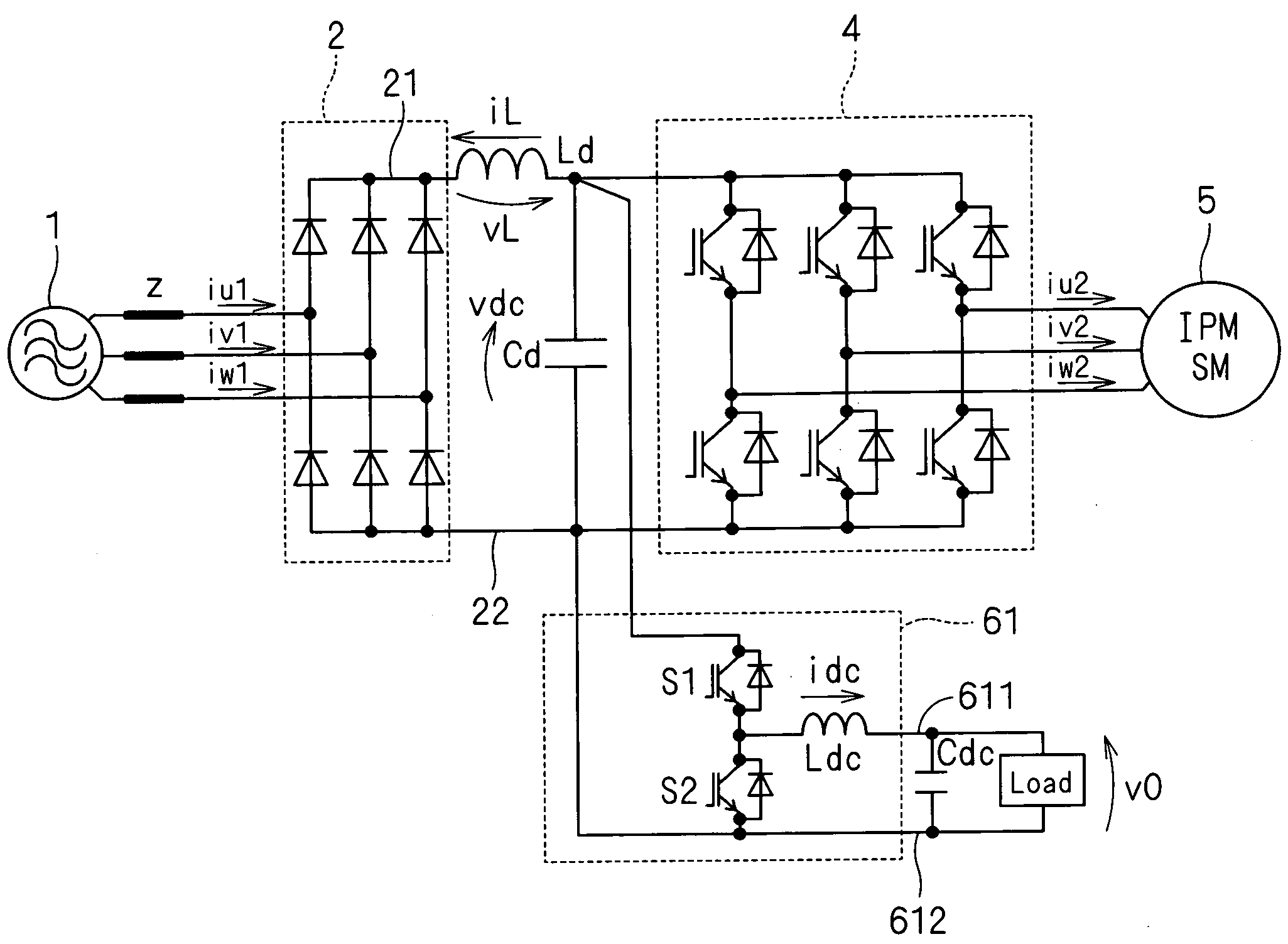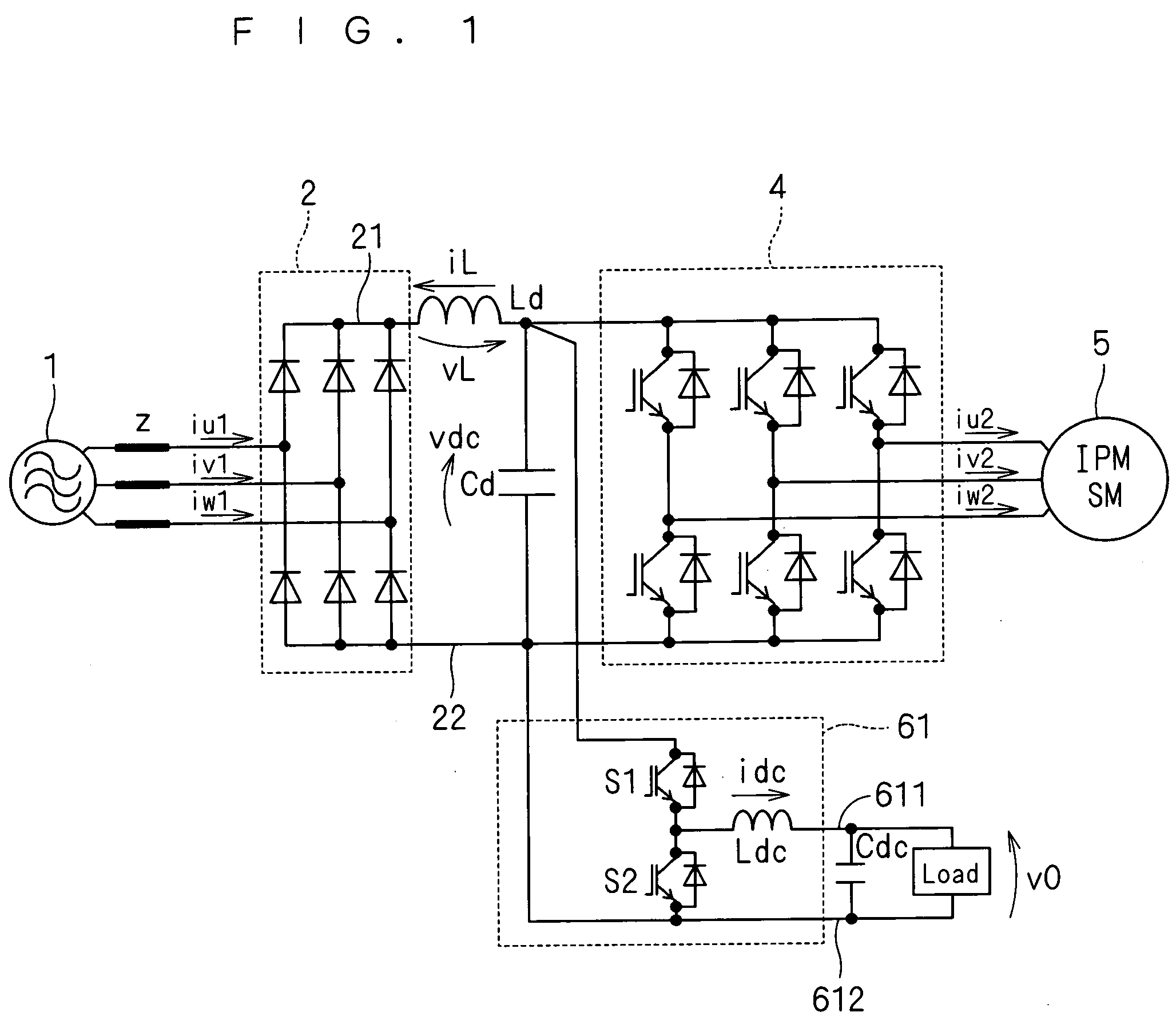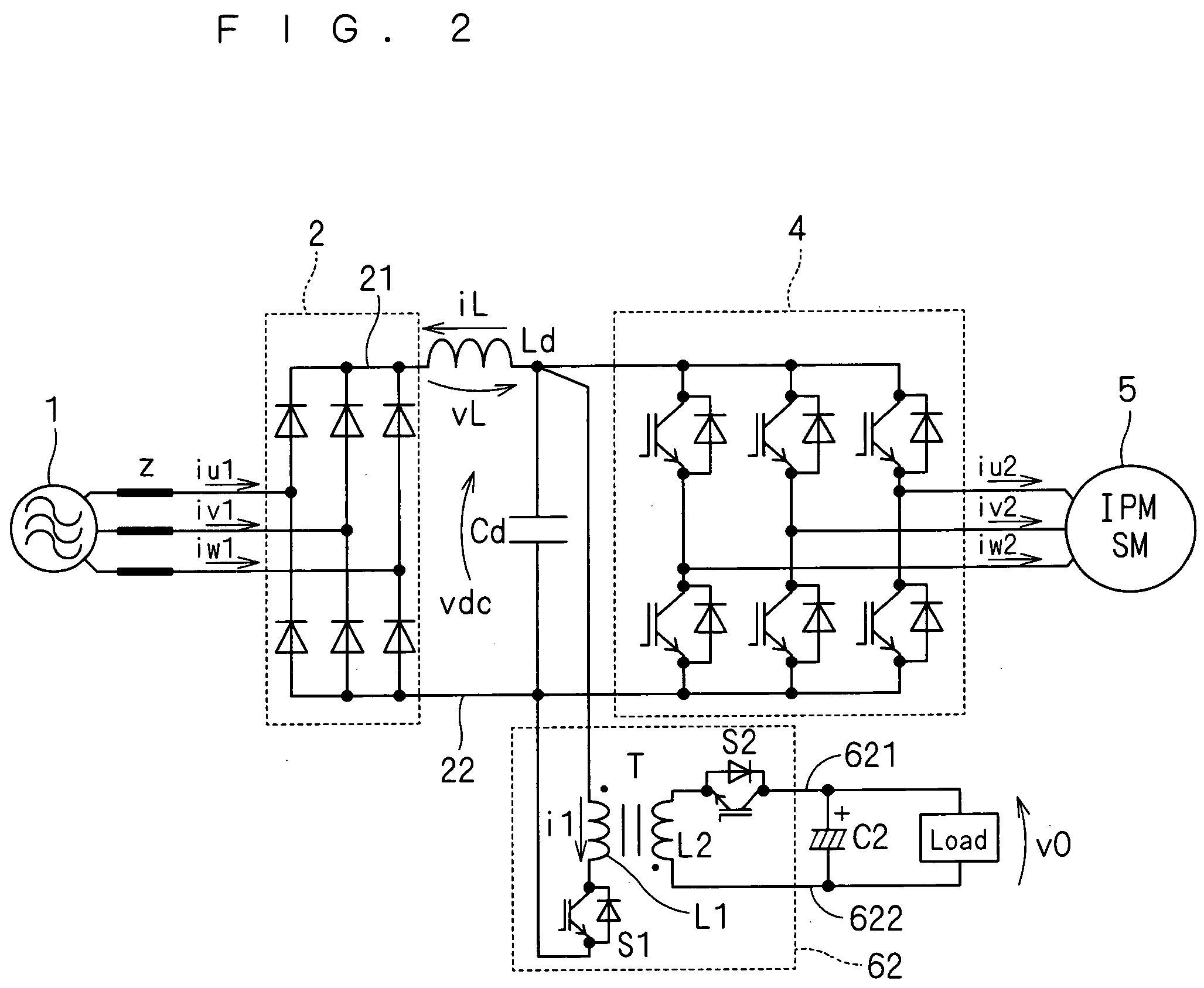Power Converter and Its Control Method and Air Conditioner
a power converter and control method technology, applied in the direction of process and machine control, instruments, heat measurement, etc., can solve the problems of increased loss, especially large size of reactors and capacitors, heavy weight, etc., to reduce high-frequency disturbance, stably apply output voltage, and rotate the motor stably
- Summary
- Abstract
- Description
- Claims
- Application Information
AI Technical Summary
Benefits of technology
Problems solved by technology
Method used
Image
Examples
first preferred embodiment
[0062]FIGS. 1 and 2 each conceptually illustrate a power converter according to this preferred embodiment. The power converters each include a first power-supply line 21, a second power-supply line 22, a rectifier circuit 2, a capacitor Cd, a reactor Ld, an inverter 4, and a switching power-supply circuit 61 (or a switching power-supply circuit 62).
[0063]FIGS. 1 and 2 show an ac power supply 1 that supplies power to the power converter, and a motor 5 that is supplied with the output from the inverter 4. Also, FIG. 1 shows a capacitor Cdc and a driven part Load that are supplied with the output of the switching power-supply circuit 61, and FIG. 2 shows a capacitor C2 and a driven part Load that are supplied with the output of the switching power-supply circuit 62. The capacitor Cdc or C2 smoothes the output of the switching power-supply circuit 61 or 62 and supplies it to the driven part Load. This preferred embodiment adopts a three-phase alternating-current power supply as the ac p...
second preferred embodiment
[0103]FIG. 9 conceptually illustrates a power converter according to this preferred embodiment. In this power converter, a first power-supply line 21, a second power-supply line 22, a rectifier circuit 2, a capacitor Cd, a reactor Ld, and an inverter 4 are configured in the same way as those of the power converter of the first preferred embodiment, and a switching power-supply circuit 6 is connected between the first power-supply line 21 and the second power-supply line 22. FIG. 9 shows an ac power supply 1 and a motor 5 as in FIGS. 1 and 2, and it further shows a motor 7 that is supplied with the output of the switching power-supply circuit 6. With the load formed of the inverter 4 and the motor 5 being regarded as a first load 4+5, the motor 7 can be regarded as a second load.
[0104]The switching power-supply circuit 6 is a three-phase inverter and has switches S31 to S36. In this preferred embodiment, IGBT modules are adopted as the switches S31 to S36. In general, a three-phase i...
third preferred embodiment
[0125]FIG. 15 illustrates a configuration in which a single-phase alternating-current power supply is adopted as the ac power supply 1 in the power converter shown in FIG. 1. In this case, the rectifier circuit 2 rectifies an input current ic from the ac power supply 1 and outputs direct-current voltage between the first power-supply line 21 and the second power-supply line 22. In other respects, it is configured in the same way as the power converter shown in FIG. 1.
[0126]Also with this power converter, performing control in the same way as described in the first preferred embodiment offers the same effects.
[0127]FIG. 16 is a graph illustrating the time variation of the input current ic that is exhibited when the control of this preferred embodiment is performed. FIG. 17 is a graph illustrating the time variation of the voltage vdc that is exhibited when the control of this preferred embodiment is performed. For comparison with FIGS. 16 and 17, FIGS. 18 and 19 respectively show the...
PUM
 Login to View More
Login to View More Abstract
Description
Claims
Application Information
 Login to View More
Login to View More - R&D
- Intellectual Property
- Life Sciences
- Materials
- Tech Scout
- Unparalleled Data Quality
- Higher Quality Content
- 60% Fewer Hallucinations
Browse by: Latest US Patents, China's latest patents, Technical Efficacy Thesaurus, Application Domain, Technology Topic, Popular Technical Reports.
© 2025 PatSnap. All rights reserved.Legal|Privacy policy|Modern Slavery Act Transparency Statement|Sitemap|About US| Contact US: help@patsnap.com



